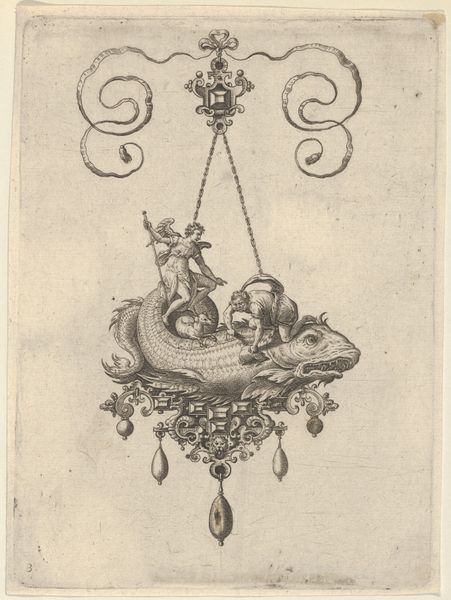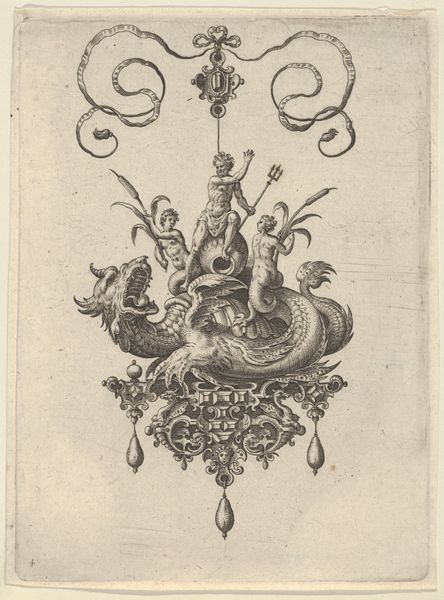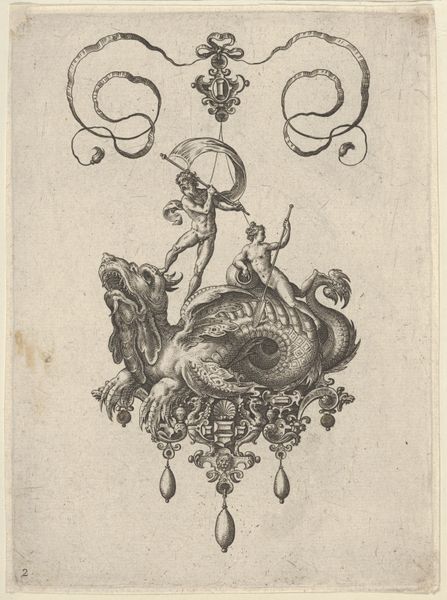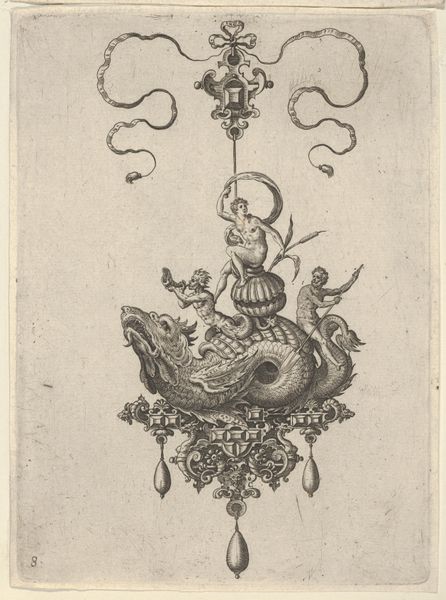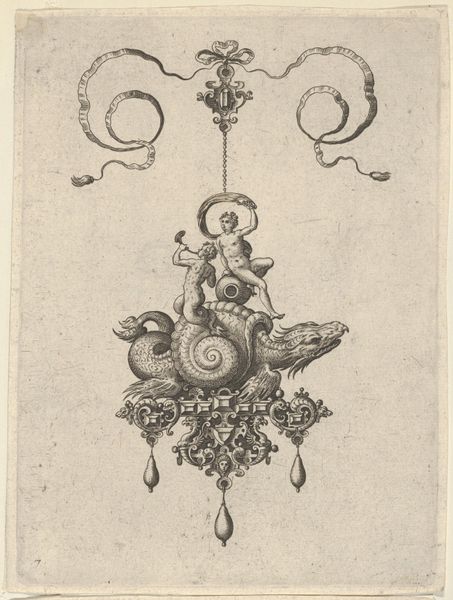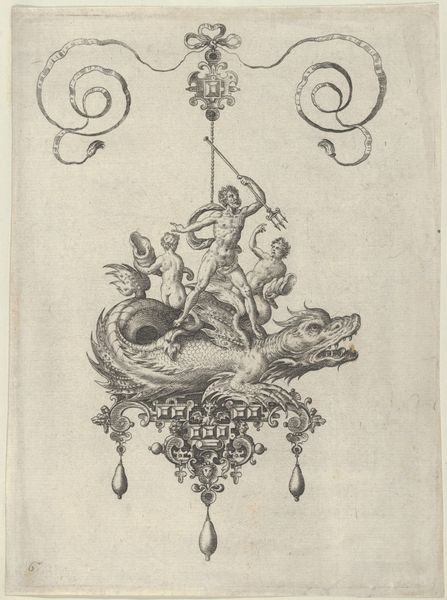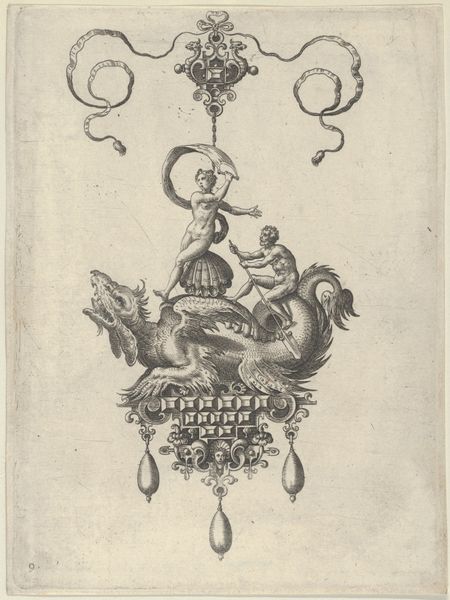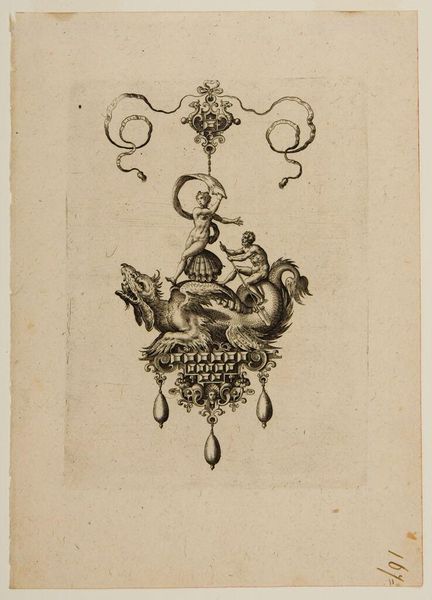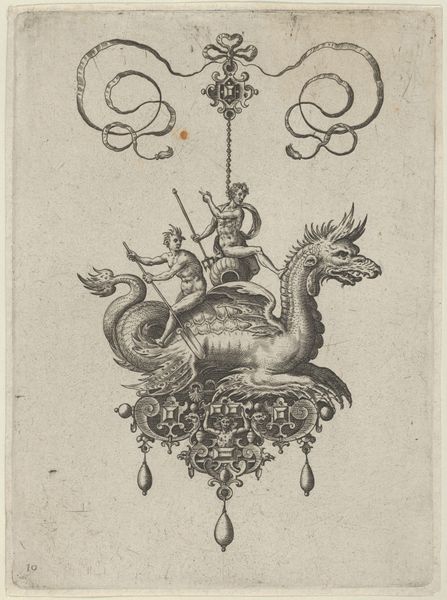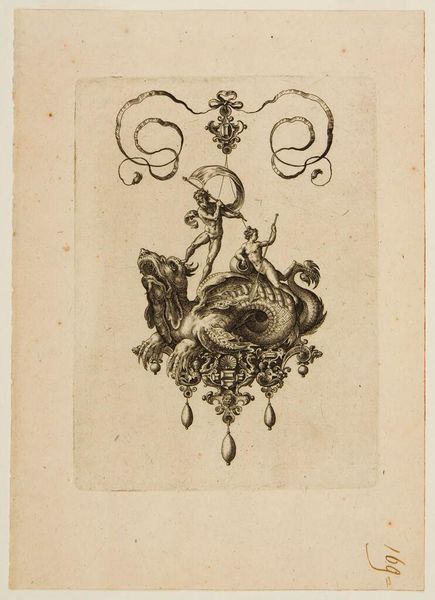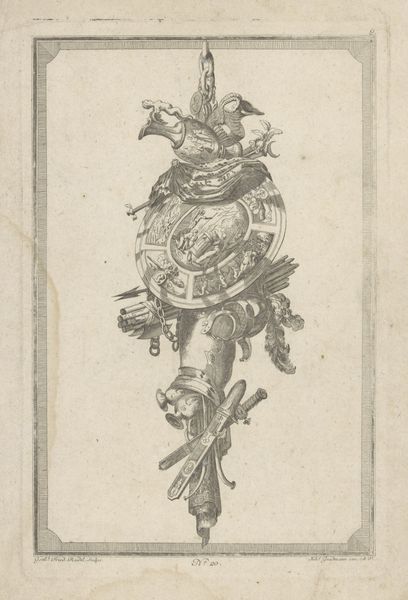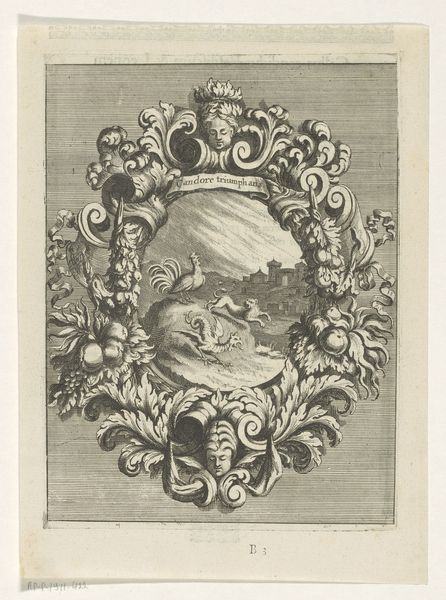
Pendant Design with a Sphinx with the Body of a Fish Carrying a Man with an Oar 1582
0:00
0:00
drawing, ornament, print, pen, engraving
#
drawing
#
ornament
#
allegory
#
pen drawing
# print
#
mannerism
#
figuration
#
11_renaissance
#
line
#
pen
#
engraving
Dimensions: Sheet: 6 7/8 × 5 1/16 in. (17.5 × 12.9 cm)
Copyright: Public Domain
Adriaen Collaert created this pendant design with a sphinx, fish body, and oarsman as an engraving sometime between 1580 and 1618. The fantastic hybrid creatures and elaborate ornamentation, a revival of classical forms, speak to the visual language of the Northern Renaissance. This print provides a glimpse into the cultural values of the 16th and 17th centuries, particularly in the Netherlands. The prominent display of wealth and status speaks to the rise of mercantile capitalism in this region. Luxury goods, like the pendant, were increasingly in demand, and prints like this one served as both inspiration and advertisement for skilled artisans. The cultural fascination with mythology is also evident. The sphinx, a figure from Greek and Egyptian lore, reflects the interest of the period in classical antiquity. It's important to remember that art like this reflects the tastes of a specific social class and reinforces its power. To fully understand this image, scholars research the history of decorative arts, the rise of mercantile culture, and the influence of classical imagery during the Renaissance.
Comments
No comments
Be the first to comment and join the conversation on the ultimate creative platform.
